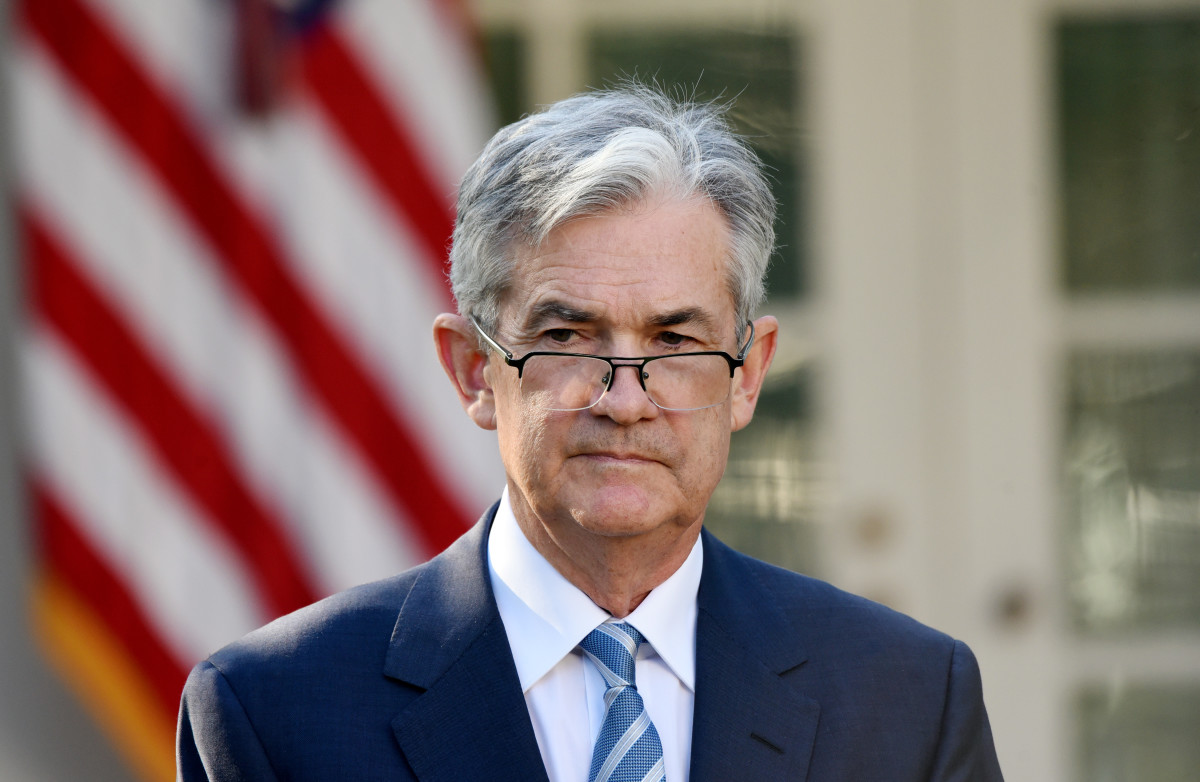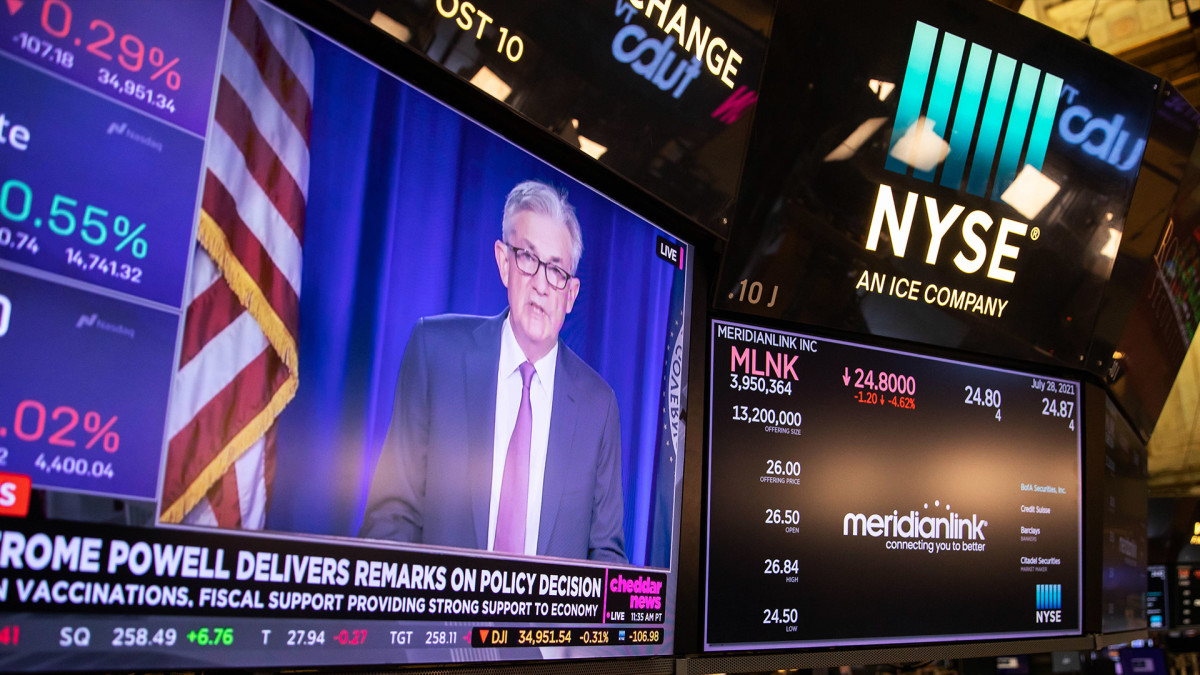
Federal Reserve Chairman Jerome Powell will take the stage at the central bank's annual retreat in Jackson Hole Friday with renewed confidence that inflation is receding and the economy is poised, albeit delicately, for a so-called soft landing.
That knowledge, cemented by recent data, a resilient stock market and fading recession risks, will likely form the tone of his keynote address to attendees at the central bank's symposium in the northwest Wyoming resort town, which will be tracked by investors on Wall Street and around the world.
What it won't do, however, is form the case for an outsized September Fed rate cut, which markets have been pushing for several months. And that could lead to a muted, or even negative, market reaction to his speech, scheduled for 10 am Eastern Time.
"We expect Chair Powell Friday to confirm the September easing, which will be accompanied by forecasts for higher unemployment and lower inflation than in the June Summary of Economic Projections," said Ian Shepherdson of Pantheon Macroeconomics.
"But we think he will seek to dampen expectations of 50 basis points, as well as reiterating that the Fed is data-dependent and does not make decisions in advance," he added. "Who, though, will be listening?"

Everyone will be listening, of course, but will they want to hear what will likely be a cautious outlook from a Fed chairman who has been roundly criticized for holding rates at too high a level, and for too long, as growth and inflation moderate?
Dovish Fed minutes
Minutes from the Fed's July meeting, published Wednesday, suggested that "several" policymakers could have made the case for a rate cut in July, while the "vast majority" agreed that a September reduction would be appropriate if the data were to support it.
Those views, it should be noted, were expressed prior to the softer-than-expected July jobs report, as well as Consumer Price Index and core Personal Consumption Expenditures inflation readings that showed price pressures at the lowest in around three years.
Policymakers also talked about the pace of consumer spending, which has "slowed from last year’s robust pace, consistent with restrictive monetary policy, easing of labor market conditions, and slowing income growth," according to the minutes.
Related: Kamala Harris sees stars align against Donald Trump
Markets are using those comments, as well as yesterday's overhaul of job-creation estimates from the Bureau of Labor Statistics, to make the case for a 50 basis point, or 0.5-percentage point, rate cut from the Fed next month.
The BLS lopped 818,000 jobs from its overall growth estimate for the 12 months ended in March, a revision that shrank the monthly average gain to 178,000 from 246,000.
James Knightley, chief international economist at Netherlands-based investment bank ING, said the recalculation "adds to doubts about the quality of the jobs numbers" investors have received since March.
Cooling labor-market data
"Given that everything was weak in the latest July jobs report – weak payrolls, rising unemployment, falling hours worked and cooling wages – the update will only put more pressure on the Fed to loosen monetary policy," he added. "Momentum is being lost from an even weaker position than originally thought."
The CME Group's FedWatch in fact pegs the odds of a larger Fed rate cut at around 26.5%, with the chances of a quarter-point reduction at 73.5%.
For the Fed's November meeting, which comes just two days after Americans go to the polls on the fifth, it's basically a coin flip between a half-point cut and a quarter-point reduction.
Philadelphia Fed President Patrick Harker told Reuters during a Thursday interview that "barring any surprise in the data we'll get between now and then, I think we need to start this process" of rate reductions in September.
But he added that “I think a slow, methodical approach down is the right way to go."
Boston Fed President Susan Collins also told Fox Business that a "gradual, methodical pace” to rate cuts is "likely to be appropriate."
Related: Recession forecasts crushed as economy defies doomsayers
That's a message that Powell is likely to echo during his Jackson Hole address Friday, as up-to-the-minute data on jobs and growth continue to show broader economic resilience.
Around 230,000 Americans filed for first time unemployment benefits last week, a modestly higher tally than the prior period but a figure that is largely unchanged from year-ago levels.
A closely tracked survey of business activity over the month of August from S&P Global, meanwhile, indicated ongoing GDP growth in the second month of the third quarter powered by the all-important services sector.
Economic growth still solid
“The solid growth picture in August points to robust GDP growth in excess of 2% annualized in the third quarter, which should help allay near-term recession fears,' said Chief Economist Chris Williamson. "Similarly, the fall in selling-price inflation to a level close to the pre-pandemic average signals a ‘normalization’ of inflation and adds to the case for lower interest rates."
Stocks, meanwhile, continue to power higher, with the S&P 500 now within touching distance of the all-time peak it reached in July, even as the heavyweight Magnificent 7 stocks this quarter have underperformed the market for the first time in two years.
More Economic Analysis:
- Kamala Harris sees markets stars align against Donald Trump
- CPI report upsets betting on big Fed rate cut
- Main Street businesses push back on Wall Street recession gloom
Will those recent gains, which have help lift the S&P 500 8.6% from its early August lows, be tested by a cautious Powell speech?
Historically, the S&P 500's reactions to Jackson Hole speeches have been significant, often moving by more than 1%
— nitin hajare (@nitinhajare_) August 21, 2024
FED Chair Powell will speak Friday evening at the event
Markets already have priced in a September interest-rate cut, potentially limiting the upside for Markets. pic.twitter.com/4vutS92lfJ
It's certainly possible, given that Powell is likely to guide only to the September meeting, leaving the market to focus on broader election and earnings-growth risks over the coming months.
Bond markets are also not behaving as optimistically as stocks, with 10-year note yields now trading higher (i.e., at lower prices) than they did before the global market turmoil triggered by the yen-carry trade turmoil on Aug. 5.
Rate-sensitive 2-year note yields are some 14 basis points higher than they were in early August and were last seen changing hands at 4.004%.
"The market is clearly on edge given that there’s no Fed meeting in October," said Geoff Strotman, senior vice president at Segal Marco Advisors.
"With PCE inflation data, the Fed’s preferred inflation gauge, due out on Aug. 30 and the jobs data on Sept. 6, if Powell can set clear guardrails around those economic numbers, we should be able to get a smoother ride into September."
Related: Veteran fund manager sees world of pain coming for stocks







